Pricing Guides & Dictionary of Makers Marks for Antiques & Collectibles

NIPPON PORCELAIN & NIPPON-WARE
:Marks & Values for Antique Japanese Porcelain or Chinaware
Join the most updated and complete collectibles research online - Learn more...
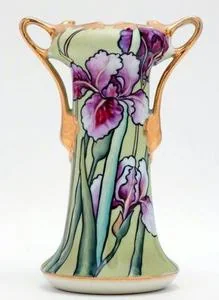 NIPPON is the official name for the country of Japan and it literally means "Rising Sun" as also attested by their national flag. It is NOT the name of a particular company or maker or artisan. By extension, NIPPON WARE refers to Porcelain & Chinaware from Japan. In other words, this term reveals the country of origin of these items, not their maker. Technically speaking, any chinaware or collectible porcelain that was made in Japan would qualify in applying this name; however, most collectors also offer a temporal distinction to this term as in using it only for items made before 1921. The reasons stem from a 1921 US official request for all imports from Japan to be labeled with the English name for the country, JAPAN, and was adopted immediately thereafter. Although this is an artificial separation, it is nowadays widely accepted as the standard way to refer to the two periods of pre-1921 as NIPPON-WARE and post-1921 as JAPAN-WARE. In general, items produced in Japan during these two periods were marked accordingly to reflect these labeling changes, with very little overlap in the early 1920s, which further enhanced the widespread adoption of these terms as a fairly accurate period description of collectible Japanese porcelain & chinaware.
NIPPON is the official name for the country of Japan and it literally means "Rising Sun" as also attested by their national flag. It is NOT the name of a particular company or maker or artisan. By extension, NIPPON WARE refers to Porcelain & Chinaware from Japan. In other words, this term reveals the country of origin of these items, not their maker. Technically speaking, any chinaware or collectible porcelain that was made in Japan would qualify in applying this name; however, most collectors also offer a temporal distinction to this term as in using it only for items made before 1921. The reasons stem from a 1921 US official request for all imports from Japan to be labeled with the English name for the country, JAPAN, and was adopted immediately thereafter. Although this is an artificial separation, it is nowadays widely accepted as the standard way to refer to the two periods of pre-1921 as NIPPON-WARE and post-1921 as JAPAN-WARE. In general, items produced in Japan during these two periods were marked accordingly to reflect these labeling changes, with very little overlap in the early 1920s, which further enhanced the widespread adoption of these terms as a fairly accurate period description of collectible Japanese porcelain & chinaware.
Japanese porcelain makers & chinaware manufacturers rarely marked their products with their company or artisan names or logos. They were simply marked with the country of origin, most often in Kanji or Kana characters before the early 1920s and in English afterward. Notable exceptions are companies that were heavily involved in Exporting these wares, for example NORITAKE (MORIMURA BROS, est. 1876), a mostly US-based Importers of porcelain & chinaware made by various makers in Japan, but who later begun producing their own items [after 1924]. Yet, there were some others, perhaps less prolific companies, but who also exported heavily to the US & Europe, and who also marked their pieces with specific and documented logos or trade names, such as FUKAGAWA [also known as KORANSHA, est. 1856 and still in business]. However, the very vast majority of Japanese imports were marked as either NIPPON or JAPAN and usually had the logo or tradename of their Importers.
Some individual potters or artisan studios, especially on artistic decorative porcelain or pottery, marked their pieces with the name or location of their studio. Some examples include ARITA, IMARI, KUTANI, HIRADO, SATSUMA and others. Marks for these items can be found in our Porcelain & Chinaware Marks Guides along with an indication of when they were in use and often with historical information that may be of interest to serious collectors. But in general, almost all other names we see marked or stamped on chinaware or porcelain from Japan refer to Trading companies, most of which were based in the US and some were an extension of high-end Retailers based in Tokyo or Kyoto, Japan.
Nippon Porcelain and practically all chinaware originating from Japan have always been and remain of the highest quality. The Japanese have been masters of porcelain making since the 16thC, primarily with the help of Korean potters who were invited to teach the locals in the industry of porcelain in places such as Arita and Hirado. Although the Chinese had invented the Kaolin + Petunse mix for making porcelain many centuries before that, some historians say as early as 100 BC, the Japanese & Koreans were the second such entrants in this Art world-wide and progressed much faster than their European counterparts, producing super-elegant and exceptional pieces that were destined for the Imperial court or similarly upper-status families and Klansmen. The use of dyes and colors that adorned these pieces is delicate and full of symbolism. Mostly minimalistic, the blending of a few colors usually revealed a deep understanding of pure aesthetics, avoiding the application of obvious and busy designs that permeated the dominant decorative styles of post-Medieval Europe. These very old and original pieces are now extremely rare and can be seen mostly at major Museums or very fine private collections. Antique NIPPON-WARE and Japanese porcelain found in today's antiques Fairs or Auctions and through dealers were made ca mid-19thC onwards.
Unlock the true value of your collection with our comprehensive research guides from identifying makers' marks to appraising all kinds of antiques and collectibles, including items featured in this article.
Our up-to-date information will give you an accurate understanding of your items' worth. Don't miss out on this valuable resource - visit our research tools today!
In addition to some examples shown below on this page, you can also search our price guide for your own treasures.
Examples of related items from our Price Guides
-
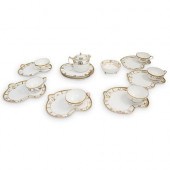 (18 PCS) "NIPPON" HAND PAINTED PORCELAIN
[more like this]
(18 PCS) "NIPPON" HAND PAINTED PORCELAIN
[more like this]
-
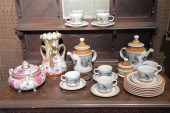 SIXTEEN PIECE GOEBEL BURGUND DESSERT SER
[more like this]
SIXTEEN PIECE GOEBEL BURGUND DESSERT SER
[more like this]
-
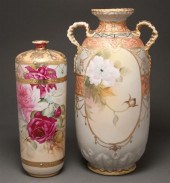 Nippon porcelain vase; together with a
[more like this]
Nippon porcelain vase; together with a
[more like this]
-
 Three Hand Painted Nippon Vases Lot of t
[more like this]
Three Hand Painted Nippon Vases Lot of t
[more like this]
-
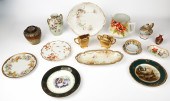 Gilt decorated porcelain grouping to inc
[more like this]
Gilt decorated porcelain grouping to inc
[more like this]
-
 10 PORCELAIN HATPIN HOLDERSLot of 10 por
[more like this]
10 PORCELAIN HATPIN HOLDERSLot of 10 por
[more like this]
-
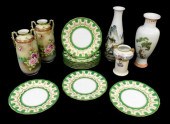 ASIAN: JAPANESE PORCELAIN INCLUDING NIPP
[more like this]
ASIAN: JAPANESE PORCELAIN INCLUDING NIPP
[more like this]
-
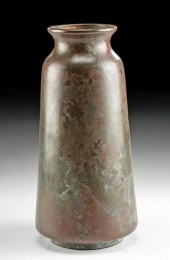 20TH C. JAPANESE BRASS "NIPPON" VASE W/
[more like this]
20TH C. JAPANESE BRASS "NIPPON" VASE W/
[more like this]
-
 RARE EARLY 20TH C. JAPANESE BRASS "NIPPO
[more like this]
RARE EARLY 20TH C. JAPANESE BRASS "NIPPO
[more like this]
-
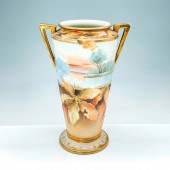 NIPPON MORIMURA PORCELAIN VASE, DUCKS AN
[more like this]
NIPPON MORIMURA PORCELAIN VASE, DUCKS AN
[more like this]
-
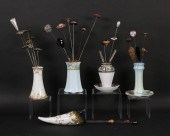 35 VINTAGE HATPINS WITH HOLDERS35 hat pi
[more like this]
35 VINTAGE HATPINS WITH HOLDERS35 hat pi
[more like this]
-
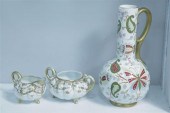 THREE PIECES: TWO BEADED NIPPON & A BUTT
[more like this]
THREE PIECES: TWO BEADED NIPPON & A BUTT
[more like this]
There are many more auction results available to our members...





